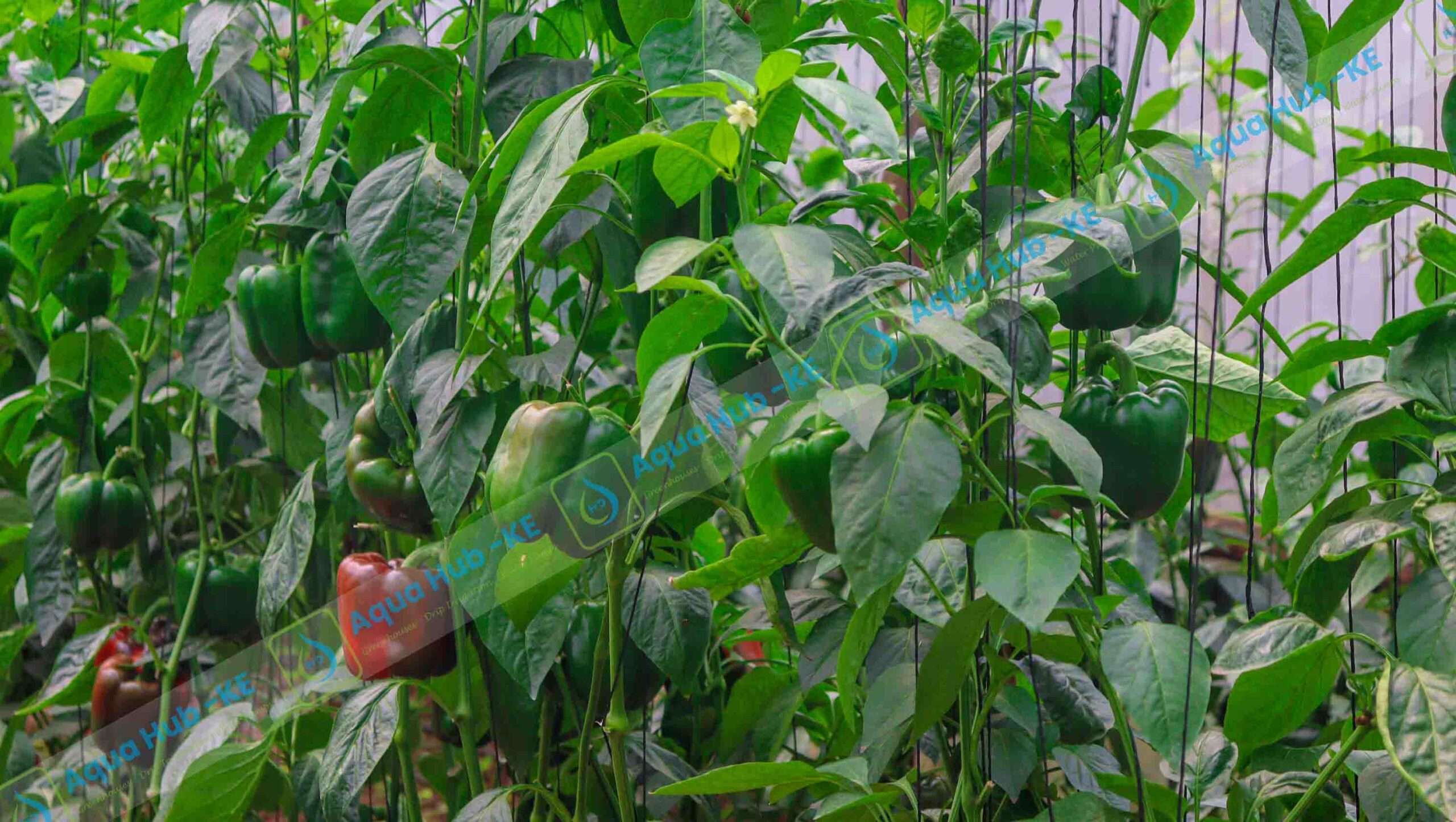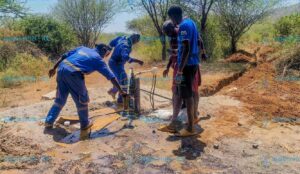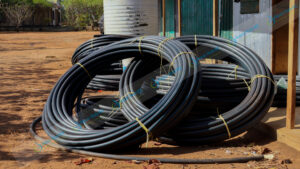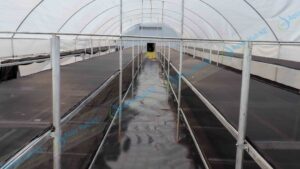Capsicum also known as Bell Peppers or Hoho, is a popular spice used to prepare variety of delicious meals. Bell peppers farming in Kenya is a known lucrative venture with its flexibility of doing well in most parts of the country. It can be grown outside but does well in controlled environments such as greenhouse or indoor propagation structures.
Aqua Hub Kenya offers reliable capsicum farming irrigation kits, greenhouses, seedling starter pack, training, sustainable management propagation to harvest and agronomy support.
Cost of Pepper Farming in Kenya Per Acre
- Capsicum farming cost in Kenya per acre are as follows:
- Greenhouse Structure – KES 100,000 – KES 340,000 for small (8 by 15 to 8 by 30 m sizes)
- Labor needs cost – between KES 10,000 – KES 20,000 as per the location.
- Pest Control – KES 5,000
- Fertilizer – KES 5,000 – KES 10,000.
How profitable is Bell Pepper Farming in Kenya?
Capsicum is among the highly profitable crops to grow in Kenya. The average yield of Capsicum per acre is 20 tons. With the cost of 1 kg of capsicum ranging from KES 60 – KES 100 on average, the total income is around KES 1.2 to 2 million. When you subtract expenses, you remain with around KES 700,000 to 1 million in profit.
Conditions for Capsicum (Bell Pepper) Farming in Kenya
- Optimal temperatures of 15-21° for fruit formation and 24-30 ° for fruit development. Such climate is attainable in a greenhouse due to temperature control.
- Ideal altitude of 2000M above sea level.
- Rainfall of 800 – 1200 mm per annum
- PH of 5.5 – 6.5
What are the Common Bell Pepper Varieties you can Grow?
Determine varieties (grown on the field) – bushy and known maturity period.
- Yolo Wonder, Maxibel and California Wonder
Indeterminate Capsicum varieties – develop fruits from a single stem with few branches.
- Commandant F1, Admiral F1, Nemalite F1, and Green Bell F1.
Benefits of Bell Peppers (Capsicum)
- Excellent source of vitamin A and C
- Prevents inflammation of body tissues and contains analgesic properties
- Rich in antioxidants which are essential in maintaining good health.
- Rich in potassium which helps in regulation of blood pressure
- Source of dietary Fiber
- Good source of vitamin B6 and folate which lower homocysteine level
Bell Peppers Farming Practices in Kenya
Depending on where you want to grow your capsicum (open field or greenhouse) and the variety you choose, the cultivation, planting, irrigation and management practices may vary.
If you choose to grow in a greenhouse environment, you should begin by acquiring a reliable greenhouse structure and ensure proper installation.
Greenhouses for Capsicum | Bell Peppers farming by Aqua Hub

The ideal greenhouses for bell peppers farming or capsicum are available on budget friendly prices at Aqua Hub LTD. They deal in installation of custom wooden and metallic greenhouses in Kenya and East Africa. Sourcing your greenhouse accessories from their shop saves on your cost, and helps you grow quality, access market access and agronomy support.
Research and purchase the reliable greenhouse structure
According to your anticipated growing needs (projected area and crop population) we help you settle for the right greenhouse structure. To help us determine the best structure and plan for installation of your greenhouse, we often require conducting a site visit to your place. With this site survey, we assessed whether the site is suitable for greenhouse farming by testing soil PH, terrain, soil type, wind direction and water access.
After the site survey, we can then advise on which size suits your budget, and the type of greenhouse to construct.
Start by Preparing the Land
Bell Peppers farming journey starts first by preparation of the land which includes getting rid of vegetation, rocks and roots that could affect propagation. For Open field capsicum farming, you cultivate the land after it is clearing then start preparing for propagation. On the other hand, for capsicum grown on greenhouse, you cultivate the land after setting up the greenhouse.
Bed Preparation and Capsicum Seedling Propagation
Break the soil loose after cultivation.
Prepare nursery beds of 1 m width and about 50 – 100m length.
Seedlings are prepared by propagation in separate nursery beds or seedling trays. However, capsicum can also be grown by directly sowing in beds though it is not ideal.
To propagate your bell pepper seedlings, you need to get quality cocopeat and seedling trays. Prepare a cocopeat mixture by mixing with soil and compost manure then place it in trays. Sow 1-2 capsicum seeds in each cell and water gently.
Place the trays in a protected area such as shade houses, greenhouses with enough light and air flow.
Transplanting Bell Peppers
Often, Capsicum seedlings attain the required size for propagation after 6 weeks of sowing. Reduce the irrigation rate by about 1 week before transplanting to make the seedlings more resistant.
While transplanting, you should be careful not to cut the roots when uprooting the seedlings from the nursery. Plant the seedlings with their propagated soil to prevent slow growth of the roots.
Weed Control in Bell Peppers farming
Weed control is by either hand uprooting, hand weeding, spraying herbicides or applying mulches. Applying mulches such as plastic mulch paper or organic mulches is an effective weed control method. Besides stopping weed growth, mulching lowers soil erosion, pest accumulation.
Capsicum Staking | Crop Support
Capsicum requires to be supported by staking to keep them upright and high fruit yield. The fruit also needs to be kept from touching the soil as it can rot.
Irrigating Bell Peppers | Capsicum: Drip Irrigation
Pepper farming in both field and greenhouse environment requires drip irrigation kits to enhance optimal watering. Greenhouse for capsicum farming by Aqua Hub comes with drip irrigation pack.
The drip kit consists of HDPE pipes, dripline rolls, fittings, ball valves, fertilizer kit, and delivery pipes. With drip irrigation method installed, you have control over irrigation rate, fertilizer supply and crop yield. Therefore, you are sure of quality, high yield and low cost of production.
Harvesting of Bell Peppers
After 3 months, the capsicum is ready for harvesting to start. Harvesting is 4 to 6 times as long as proper management and irrigation is done.
Post-Harvest Handling of Capsicum
Post-harvest practices for capsicum farming include sorting damaged fruits, grading, packaging and storage. Storage needs to be done in cool conditions with relative humidity of 95-98%.





